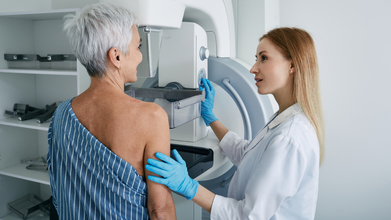- Health Conditions A-Z
- Health & Wellness
- Nutrition
- Fitness
- Health News
- Ayurveda
- Videos
- Medicine A-Z
- Parenting
Ever Had Numb Legs After Using The Toilet? Here’s What It Means

Image Credit: Canva
We've all been there, you use the toilet, try to stand up, and suddenly your legs go numb. That odd pins-and-needles feeling can be surprising and uncomfortable. Though it might feel like a small inconvenience, it does have a scientific explanation. The numbness, also called transient paresthesia, happens when pressure blocks blood flow or presses on nerves in your lower extremities. It is normally harmless, but frequent occurrences can be signs of underlying health issues or poor toilet habits that must be addressed.
That weird numbness you experience after going to the bathroom is typically just a temporary annoyance, most often due to bad posture, straining, or sitting for an extended period. But if the numbness continues or gets worse, it is important to get medical guidance to make sure there are no underlying health issues. We discovered the top three reasons that could be responsible for this tingling and how can you avoid it? Let's dissect.
3 Reasons Your Legs Go Numb on the Toilet
1. You’re Straining Too Much
Struggling to push during a bowel movement can put excessive pressure on your abdomen and spine. This increased pressure can shift spinal discs, pressing against nerves that extend into your legs and feet. The result? A temporary loss of sensation, tingling, or weakness in your lower limbs.
Straining usually results from constipation, which in turn can be caused by a low-fiber diet, dehydration, or inactivity. If you notice that you're straining frequently, perhaps it's time to change your eating and drinking habits to help move your bowels more easily.
2. Inadequate Sitting Posture
The way you sit on the toilet can also be a cause of that numbness in your legs. Most people are prone to hunching over when they are using their phones, reading, or just focusing too intensely. But this position can compress nerves and blood vessels in your pelvis, causing tingling or numbness.
When you sit slumped forward, you cut off blood supply to the lower half of your body, compressing nerves that travel from your pelvis to your toes. That's why the numbness will often radiate past your thighs and into your toes.
3. Sitting for Too Long
The more time you spend sitting on the toilet, the higher your chance of getting numb legs. Protracted sitting continually puts pressure on the nerves within your lower limbs, slowing blood flow and leaving you with the familiar pins-and-needles feeling.
If you habitually stay on the toilet for a long time, either from digestive problems or distractions such as browsing your phone, you may find that there is more numbness over the course of time. If constipation is leaving you on the toilet longer than normal, diet changes can calm your system.
How to Stop Your Legs from Falling Asleep on the Toilet
Although periodic tingling is not a health issue, recurring numbness is a problem that needs to be addressed. Below are some professional-recommended ways of preventing it:
1. Proper Posture
Being seated with your knees higher than your hips can make all the difference. Sitting this way enables your colon to unwind, facilitating smooth bowel movements while minimizing pressure on the lower parts of your body.
Don't slouch, as this squishes nerves and blood vessels, making numbness more likely. If necessary, lean your back against the toilet tank or wall to keep your posture good.
2. Don't Spend Too Long on the Toilet
Specialists recommend five to ten minutes of toilet time per visit. If you are straining, stand up, walk around, and try later. Forcing the bowel movement can cause more damage than benefit, putting greater pressure on your spine and worsening numbness.
If constipation is a chronic problem, being hydrated and consuming fiber foods such as fruits, vegetables, and whole grains can get your digestive system back in working order.
3. Use a Toilet Stool
Raising your feet using a toilet stool may position your body for a more natural and strain-free bowel movement. A squatting position keeps the rectal canal open, minimizing the need to push and reducing the risk of leg numbness.
4. Try a Padded Toilet Seat
Hard toilet seats can restrict circulation in your lower body, increasing the risk of numbness. A cushioned or padded toilet seat can provide better support, improving blood flow to the legs and feet while reducing pressure on the pelvis.
When to Seek Medical Advice
While it's normal to have some numbness in your legs from time to time when sitting on the toilet, ongoing tingling or numbness in your lower extremities may be a symptom of an underlying medical condition. If you find yourself experiencing:
- Bathroom-use-independent frequent numbness
- Muscle weakness
- Pain or discomfort in legs or lower back
- Loss of bladder or bowel control
It's best to see a healthcare expert to exclude conditions such as nerve compression, circulatory disorder, or spinal condition.
Delhi Sees Some Relief From Toxic Air; GRAP IV Removed, 'Will Bring Down Pollution In 5 Years,' Says Nitin Gadkari

Credits: iStock
Delhi finds itself in a little relief as the AQI of the city has dropped to 221 as per the CAQM. GRAP IV restrictions have also been lifted, however, pollution and smog continues to take over the city. The Meteorological Department has issued a yellow alert for the next few days, which could affect road and air traffic.
While GRAP IV is now removed, measures under GRAP I, II, and III will continue. As per the IMD forecast, this is what could happen for the next 5 days in Delhi
- December 26: Dense fog will prevail in the morning. Visibility is likely to be low.
- December 27: Yellow alert, dense fog in the morning and afternoon.
- December 28: Yellow alert, moderate to dense fog expected in the early morning.
- December 29-30: Fog will reduce slightly, but moderate haze will prevail in the morning.
Union Transport Minister On Delhi's Pollution
Nitin Gadkari, Union Minister of Road Transport and Highways also highlighted the alarming conditions of Delhi's smog and pollution. He said, "I stay for hardly two days in Delhi, and get an infection," as he spoke on how pollution impacts one's health conditions. However, he did speak on the severity of pollution and highlighted how the transport sector could play a huge role to bring relief to Delhi.
He highlighted that fuel combustion and transport emission leads to most of Delhi pollution.
In an interview with the news agency ANI, the minister also said that his ministry and Central Government are working on several projects and initiatives that will free Delhi from air pollution in the next five years.
Gadkari stated that the Ministry of Road Transport and Highways is undertaking projects worth Rs 1 lakh crore in Delhi to ease traffic congestion. He stated that all these efforts will not only help free Delhi of air pollution but also reduce the country's imports, increase job opportunities, and help farmers.
Electric Buses, Cars, and Scooters
The minister highlighted that 40% of the air pollution in the National Capital region is due to the burning of fossil fuels. In this regard, the government introduced electric buses in the city and enabled automakers to introduce electric cars and two-wheelers in the country.
He further stated that alternate fuel vehicles, such as those that run on CNG, LPG, and flex fuels (E20), are also being introduced and that all these efforts combined will reduce the city's pollution levels.
CNG And Bitumin From Rice Straw
Gadkari pointed out that nearly 200 lakh tonnes of rice straw or parali is burnt in Haryana and Punjab, a major cause of air pollution in the Delhi-NCR region. In this regard, the government is setting up 400 plants to convert the rice straw into CNG. At the moment, 60 plants are operational.
The minister also discussed a new project in Panipat in which rice straw is being used to create 1 lakh litres of Ethanol, 1.5 tonnes of bitumen, and 78,000 tonnes of jet fuel.
Essential Tests Every Woman Should Go Through Before 2025 Ends

Credits: iStock
As the year draws to a close and 2026 approaches, most women find themselves juggling work deadlines, family responsibilities, and festive plans. In the middle of it all, personal health often slips to the bottom of the list. But doctors say this is exactly the time to pause and take stock of your body, especially your reproductive and hormonal health.
“Annual gynecological screening is one of the simplest ways to prevent silent illnesses, detect early changes, and understand your reproductive health better,” says Dr Tanveer Aujla, Consultant Obstetrician and Gynecologist at Motherhood Hospitals, Noida. Many common conditions show little to no symptoms in the early stages, making routine testing crucial.
Why yearly gynecological check-ups matter
Women often ignore subtle signs like fatigue, irregular periods, unexplained weight changes, or mood swings, assuming they are part of a busy lifestyle. According to Dr Aujla, this delay can be risky. “Conditions like cervical abnormalities, breast lumps, thyroid disorders, vitamin deficiencies, or hormonal imbalance often develop quietly and show symptoms only later,” she explains. A yearly check-up helps catch problems early and allows women to plan their health with confidence, especially if pregnancy is on the horizon.
Pap smear and HPV testing for cervical health
One of the most important screenings is the Pap smear combined with HPV testing. The Pap test looks for abnormal cells on the cervix, while the HPV test detects high-risk viruses responsible for most cervical cancers. “Together, they form a powerful screening tool,” Dr Aujla says. Women between 25 and 65 years should undergo this test every three to five years, or as advised by their doctor.
Breast screening for early detection
Breast health should never be overlooked. Dr Aujla advises yearly mammograms for women above 40, along with clinical breast examinations or ultrasound scans when needed. “These screenings help identify lumps, cysts, or early tissue changes,” she notes. She also stresses the importance of monthly self-examination to check for lumps, pain, or changes like inverted nipples.
Thyroid testing for unexplained symptoms
Thyroid disorders are extremely common in women and often remain undiagnosed. “A simple TSH, T3, and T4 test can explain symptoms like fatigue, mood swings, irregular periods, weight changes, or fertility issues,” says Dr Aujla. Early diagnosis can significantly improve quality of life and prevent long-term complications.
Fertility markers and preconception screening
Tests like AMH offer insight into ovarian reserve and help women plan their reproductive timelines. Dr Aujla points out that this is especially important for women with PCOS, irregular cycles, or delayed family planning. Preconception screening, which includes anemia levels, vitamin D, rubella immunity, blood sugar, and hormonal panels, ensures the body is prepared for a safe pregnancy.
Other essential health screenings
Women over 30 or those with a sedentary lifestyle should also get diabetes and cholesterol tests. Bone health panels checking calcium and vitamin D help prevent future osteoporosis. STI screening is equally important, as infections like chlamydia or gonorrhea can silently damage reproductive health if left untreated.
“Whether you are planning pregnancy or simply want to stay healthy, these tests offer clarity, confidence, and peace of mind,” Dr Aujla concludes. Taking time for these screenings before the year ends is a small step that can protect your health for years to come.
Is Santa Claus Bad for Your Health? Here’s Why a Doctor Is Raising Concerns Ahead of Christmas

Credits: iStock
Santa Claus is bad for your health! This is a statement by Dr Nathan Grills, a Public Health Fellow in the Department of Epidemiology and Preventative Medicine, Monash University, Australia. Why is he saying this right ahead of Christmas?
Writing for an article in the British Medical Journal's Christmas issue (BMJ), he says, "Santa only needs to affect health by 0.1% to damage million of lives". He says it would be better if his popularity was rather used to promote healthy living.
Why Is Santa Claus Unhealthy?
Santa Claus's portrayal is where the concerns lie. This was not the first time someone has talked about. In fact, The Conversation in December 2024, talked about this exactly. If you look at Santa, he stands anywhere between 5'6" to 6'6" and weighs between 80Kgs to 136Kgs. He also carries a lot of weight around his belly, which, some may say, keeps him insulated as he sleighs through the snowy lands, but is sure overweight and obese. These portrayal promotes an unhealthy living.
Dr Grils also writes that Santa should rather share Rudolf's snack of carrots and celery sticks than brandy and mince pies, and swap his reindeer for a bike or a walk.
After reviewing existing literature and online sources to understand Santa Claus’s possible impact on public health, the analysis found no peer-reviewed studies directly addressing the issue. What did stand out, however, was the exceptionally high level of awareness of Santa among children. In fact, surveys of American schoolchildren showed that Santa Claus was recognized more widely than almost any other fictional character, second only to Ronald McDonald.
The doctor says that Santa is also used for selling products, which are mostly harmful, and this happens on global scale, which means, people get inspired. "Santa sells, and sometimes he sells harmful products. Like Coca-Cola, Santa has become a major export item to the developing world."
While Santa has been banned from smoking, but his images of enjoying a pipe or cigar are easily found on Christmas cards. The depiction of Santa does form a public perception, argues the doctor.
Dr Grill also notes that Santa may be promoting potential drink-driving, especially when someone follows the tradition to leave him a brandy to wish him well on his travels, while he has billion houses to visit.
Can Santa Spread Diseases?

Dr Grill says that he can spread diseases. If Santa sneezes or coughs around 10 times a day, all the children who sit on his lap may also end up catching the flu along with their Christmas presents.

However, it is important to note that these are views expressed by the doctor and no actual studies have been conducted on the same, Though Dr Grill does indicate for more research before calling for authorities to regulate Santa's activities. For now, Dr Grill proposes a new image for Santa, a healthier one. A slim Santa on a treadmill.
© 2024 Bennett, Coleman & Company Limited

